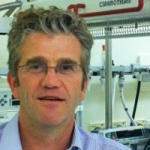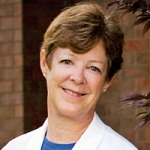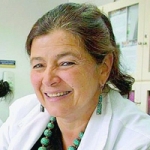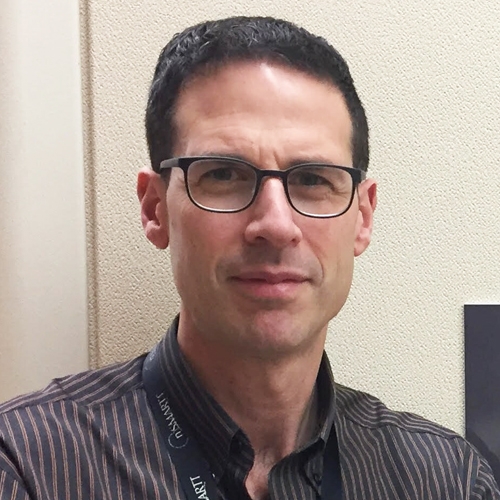
Neonatal / NICU Care Continuing Education Course Bundle #1 (10.5 Hours)
Originally offered 2017 at our GOLD Neonatal Conference. GOLD Neonatal provides an unique educational opportunity for healthcare professionals caring for high-risk neonates. This Lecture Bundle is appropriate for anyone working in the neonatal field, including Neonatal Nurses, Nurse Practitioners, Physicians, Neonatologists, medical and nursing students, NICU Nursing Staff, Occupational Therapists, Dieticians, Speech and Language Pathologists, Respiratory Therapists and anyone working with premature or ill newborn infants.


Dr Embleton has worked in neonatal medicine for the past 25 years, completing clinical training and a research doctorate in neonatal nutrition in the UK, and a neonatal fellowship in Vancouver, Canada. He has worked as a Consultant Neonatal Pediatrician in Newcastle, UK since 2002, one of the largest UK neonatal units, caring for sick preterm and term born neonates. He leads a broad portfolio of research focused on nutrition and gut health in preterm infants. Areas of work include determining patterns of early gut microbial colonization, and how these may predict the development of necrotizing enterocolitis (NEC) and sepsis. He is a project team member of large neonatal feeding trials recruiting >5000 infants in the UK, as well as coordinating mechanistic studies using microbiomic and metabolomic analyses. He chairs the multi-disciplinary UK Neonatal Nutrition Network (N3) and is a member of the Committee of Nutrition for ESPGHAN.
Topic: Probiotics in Preterm Infants - [View Abstract]
Objective 1: The pattern of brain growth during the 3rd trimester and the first 2 years of life Objective 2: Describe the long-term brain benefits of breastmilk feeding for preterm infants Objective 3: Understand the potential risks and benefits of continued use of breast-milk fortifier Objective 4: Understand the reasons for the use of Vitamin D and Iron following discharge Objective 5: Consider issues relating to the introduction of complementary foods in preterm infants Objective 6: Appreciate the concept of complex interventions in nutritional management
Survival in preterm infants has increased over the last few years, and this has been accompanied by an increasing focus on the importance of nutrition and the effects of preterm birth on later outcomes. Providing nutrition to sick preterm infants in the NICU is complex, and almost all preterm infants are discharged with growth outcomes (weight and length) considerably below their birth centiles. This is important because data show an association between poorer growth and nutritional status in the NICU, and worse longterm neurodevelopmental outcomes. Whilst greater efforts are required to improve nutritional status prior to discharge, the post-discharge setting represents a time period when brain growth is also rapid, and where the potential exists to improve outcome through nutritional interventions. However, the potential benefits of improved brain outcomes need to be considered alongside the possibility of metablic harm induced by excessively rapid growth which may increase risks of obesity and later chronic disease. This talk will consider the continued importance of breast milk after discharge, the potential role of fortifiers and supplements in meeting nutrient requirements, and issues around the timing of introduction of complementary foods.


After 37 years as an attending neonatologist and 18 years as medical director of lactation services, Nancy retired from clinical practice 2019. She graduated from medical school and did her training in pediatrics at the University of North Carolina, Chapel Hill. She did her fellowships in Neonatal-Perinatal Medicine and ECMO at UCSD Medical Center in San Diego. She has been a board-certified lactation consultant since 1988.
Nancy co-founded the San Diego County Breastfeeding Coalition in 1994. She was the Breastfeeding Coordinator for AAP CA Chapter 3 from 1992 until 2020, Board Member of HMBANA 2015-2019 and established the first Donor Milk Depot in San Diego over 25 years ago. Nancy is a past president of the Academy of Breastfeeding Medicine. She wrote, and continues to update, the very first ABM Protocol on Hypoglycemia and Breastfeeding.
In 2014 Nancy was awarded the Golden Wave Award by the California Breastfeeding Coalition for her efforts to reduce obstacles to breastfeeding in California, and the WIC Breastfeeding Champion Award in 2017. She received AAP Special Achievement Awards in 1997 and 2021 for her breastfeeding education and promotion efforts.
On a personal note, she is the mother of a (formerly breastfed) archaeology student and lives in San Diego, CA, with her significant other, their dog, Darwin, and a beautiful view of the ocean.
Topic: NICU Nutrition: Best Practice for Best Outcomes - [View Abstract]
Topic: NICU Nutrition: Current Status, Opportunities & Challenges - [View Abstract]
Objective 1: List the key goals of nutritional therapy for preterm and other ill NICU infants. Objective 2: Discuss at least 2 benefits and 2 concerns of banked donor human milk in the NICU. Objective 3: Describe currently available human milk-derived products for preterm infants. Objective 4: Propose possible ways to improve the availability of human milk in the NICU.
The preferred feeding for all NICU infants is human milk, preferably started on day 1. If mother’s own milk is not immediately available, the clinician should consider the use of heat-treated donor human milk (DHM), which has most of the properties of fresh human milk (immunoglobulins, growth and developmental hormones, enzymes, anti-inflammatory factors, etc.), is sterile, and reduces NEC while improving feeding tolerance. The use of human milk and human milk-derived products has been steadily increasing in world-wide NICUs. In many areas of the USA, it is the standard of care. We will explore the benefits and risks of various donor human milk products, as well as the cost-effectiveness, and challenges for NICUs in using these products.


Dr. Sue Hall has been a neonatologist for 25 years, and before that she worked as a master’s level social worker. She has a BA from Stanford University, an MSW from Boston University, and an MD from the University of Missouri-Kansas City. She completed training in Pediatrics and Neonatology at The Children’s Mercy Hospital in Kansas City, MO, then joined the faculty at UCLA’s David Geffen School of Medicine where she affiliated for 19 years. Now in private practice at a community hospital NICU in Oxnard, California, Dr. Hall was the Co-Chair of the National Perinatal Association’s Workgroup on “Interdisciplinary Recommendations for Psychosocial Support of NICU Parents,” which resulted in publication of a supplement issue of Journal of Perinatology in December, 2015. She is also the author of a book about life in the NICU, titled For the Love of Babies, published in June, 2011.
Objective 1: Recognize and differentiate the clinical presentation of 7 common diagnoses that are seen shortly after birth in newborns. Objective 2: Identify the risk factors for the 7 common diagnoses being presented. Objective 3: Provide initial stabilization and management of the 7 common diagnoses.
This presentation will cover the evaluation and management of the following conditions commonly seen in newborns at or shortly after birth: Pheumothorax, transient tachypnea of the newborn, sepsis, poor transition, respiratory distress syndrome, meconium aspiration syndrome, and cyanotic congenital heart disease. Clinical photographs and reproductions of xrays will assist the participant's ability to recognize these conditions


Regina Grazel is a certified perinatal advanced practice nurse with more than 30 years of neonatal nursing experience. She holds several clinical designations, including ANCC board-certified high-risk perinatal nurse, neonatal resuscitation program regional trainer, NANN neonatal developmental care specialist, and certified breastfeeding counselor. Jean is currently serving on the National Association of Neonatal Nurses (NANN) Board of Directors as the Immediate Past President having completed her term as President in October 2016. Jean is also a former president of the Delaware Valley chapter of NANN. After many years as a Perinatal Clinical Nurse Specialist in the acute care setting, she has moved into the public health arena. Jean is employed by the New Jersey Chapter of the American Academy of Pediatrics as the Program Director for the New Jersey Department of Health Critical Congenital Heart Defects Screening Program and Zika Infant Surveillance.
Objective 1: Identify the contribution of pulse oximetry screening to the detection of critical congenital heart defects. Objective 2: Apply recommended practices for performing the screening using pulse oximetry. Objective 3: Describe results of a statewide CCHD screening program.
This presentation will review the background and importance of newborn screening with pulse oximetry to aid in the early detection of critical congenital heart defects and other serious conditions. Factors influencing implementation of the screening including legislation, advocacy efforts and recommendations by professional medical associations will be covered. Best practices for performing the screening will be reviewed as well as implications for screening in the NICU and other special populations. The results of the first statewide screening program implemented in the US will be shared to demonstrate the unique contribution of pulse oximetry in the detection of previously unrecognized CCHD.


Dr Nathalie Charpak is currently the scientific coordinator and an attending paediatrician at the Kangaroo Mother Care program of the San Ignacio University Hospital. In addition, she is a founding member, senior researcher and director of the “Fundacion Canguro” in Bogotá, Colombia since 1994. Dr Charpak received her M.D. from the “Paris Sud” University and her paediatrician diploma from “Rene Descartes” University in Paris, France. She migrated in 1986 to Colombia where she validated her title as Paediatrician and begin in 1989 to work on the evaluation of the Kangaroo Mother Care (KMC) program. She is now a Colombian citizen. With several colleagues she founded in 1994 the “Fundacion Canguro” in Bogotá, an NGO devoted to research, teaching, training and direct medical care related to KMC method for premature infants that besides conducting large clinical trials on KMC has been actively disseminating the method mainly in low and middle income countries in Latin America, South East Asia, India, Africa and Eastern Europe. In 1996 in Trieste Italy she was among the group of international researchers, physicians and nurses who founded the International Kangaroo Network -INK- an international alliance devoted to collaborating, enhancing and disseminating the KMC method. Dr Charpak continues to work as an attending paediatrician in the KMC program and his current research interest is in integrative methods for summarizing and putting into action what is known about KMC in the form of evidence-based clinical practice guidelines. She is also recently involved as coordinator in conducting evaluations of long term (adolescents and young adults) neurodevelopment outcomes in preterm infants exposed or not exposed to KMC during the neonatal period.
Objective 1: To describe the different components of the KMC intervention and the target population Objective 2: To understand what is KMC in real life Objective 3: To learn the KMC evidences and last research on long term outcomes at 20 years
The Kangaroo Mother Care (KMC) Method is primarily targeting the preterm and/or LBW infants once they are stabilized and adapted to extra-uterine life. KMC has three mayor components: kangaroo position (KP) or direct skin-to-skin contact between the mother and the baby; the kangaroo nutrition (KN) based on exclusive breastfeeding and the kangaroo discharge policies: early discharge in KP at home or in a KMC ward under strict follow up. KMC is a tool for humanization at all levels of neonatal care. There is sound scientific evidence for the effectiveness and safety of KMC in terms of mortality, early infectious morbidity, development, promotion and maintenance of breastfeeding. Also, there is evidence for the beneficial effects of KMC on establishing healthy bonding between mothers and infants. Many health professionals consider KMC as a means of protecting the immature brain when it is the most fragile and the results of our long term follow up are supporting this hypothesis.


After raising three children as a stay-at-home mother, Dr. Phillips received a Masters degree in Developmental Psychology, became NIDCAP certified as an Infant Developmental Specialist, and then attended medical school at University of California, Davis, graduating in 2004. She completed her pediatric residency and neonatology fellowship at Loma Linda University Children's Hospital in Loma Linda, CA and is currently an attending neonatologist in the NICU at the same hospital as well as Co-Medical Director of Newborn Nursery at Loma Linda University Medical Center-Murrieta. Dr. Phillips is an International Board Certified Lactation Consultant and is a Fellow of the Academy of Breastfeeding Medicine. She is the immediate past president of the National Perinatal Association. Her primary areas of interest are mother-infant attachment, breastfeeding education and support, and Family-Centered Neuroprotective Care of premature infants in the NICU.
Objective 1: Describe 4 principles of adult learning and change practice. Objective 2: Describe 7 Neuroprotective Core Measures and how they can provide the structure and organization of a Neuroprotective Care Program to promote Family-Centered Developmental Care in the NICU. Objective 3: Describe 3 benefits to NICU staff of participating in a structured, administratively supported, staff-driven program to implement Neuroprotective Family-Centered Developmental Care in the NICU.
There is ample evidence that Family-Centered Developmental Care in the NICU results in improved neonatal and neurodevelopmental outcomes, increased family satisfaction and even enhanced employee satisfaction once the culture change has been accomplished. However, implementing the known principles of Family-Centered Developmental Care in the NICU to create those culture changes has long been a challenge. Several models of implementing developmental care have been tried and met with varying challenges and degrees of success. The Seven Neuroprotective Core Measures of Family-Centered Developmental Care in the Neonatal Integrative Developmental Care Model has been trialed in our NICU for the past three years and has proven to be effective as a tool to bring about staff buy-in and engagement in the process of implementing Family-Centered Developmental Care principles into the culture of our NICU.


Karel Allegaert received his MD and PhD at the KU Leuven, Belgium where he trained as a pediatrician-neonatologist, with an additional expertise in clinical pharmacology. He is professor at the KU Leuven (department of development and regeneration) and is clinical consultant at the pediatric intensive care unit of the Sophia's Children's Hospital, Rotterdam, the Netherlands. His research is focused on developmental perinatal pharmacology and neonatal and pediatric pain, has been supported by European funding (Albino study), and national grants (FWO, IWT-SBO) and has resulted in about 300 PubMed citations, H index 33. He is member of the Royal Academy of Medicine of Belgium, president of European Society of Developmental Pharmacology and section head clinical pharmacology of the European Society of Pediatric Research.
Objective 1: Understand the relevance of prevention and treatment of neonatal pain Objective 2: Assess and use non-pharmacological interventions to treat neonatal pain Objective 3: Assess and use pharmacological interventions to treat neonatal pain
Inadequate pain management in neonatal life impairs neurodevelopment outcome because it alters pain thresholds, pain-or stress-related behaviour, and physiological responses later in life. However, there are recently also emerging animal experimental and human epidemiological data on the impact of analgo-sedatives on neuro-apoptosis and impaired neurodevelopmental outcome. As a consequence, the management of neonatal pain is in search of a new balance, and these conflicting observations are the main drivers to tailor our pain management in neonates. Adequate pain management is based on prevention, assessment, and treatment with subsequent reassessment. Issues related to prevention and assessment tools are covered. Non-pharmacological (e.g., complementary interventions like facilitated tuking, nonnutritive sucking) and pharmacological (e.g., acetaminophen, opiods, ketamine, propofol) treatment modalities were reviewed and reflect the increased knowledge on neonatal pain management. Each topic ends with some take-home messages that in part also reflects the speakers option on the current status of this topic


Keira Sorrells is the mother of triplets born at 25 weeks, 5 days gestation. After starting a non-profit, the Zoe Rose Memorial Foundation in 2008, to offer support services to NICU and bereaved families, she became aware that a collective voice for parents of NICU babies was missing in the Maternal and Infant Health community. In response, she helped launch the Preemie Parent Alliance (PPA) in 2012, where she now serves as President. PPA is a national network of 35 NICU parent support organizations that collaborate to represent the needs and best interests of NICU families in a variety of ways. Ms. Sorrells believes a trusting parent-provider relationship is crucial to build a foundation of empowerment and support on which NICU families thrive well beyond discharge, no matter what the ultimate outcome may be.
Objective 1: Identify common responses of parents to the preterm birth of their child Objective 2: Analyze long term impact and implications for families following the preterm birth of their child Objective 3: Identify common communication barriers between NICU parents and care providers Objective 4: Provide specific strategies for communicating with NICU parents
It is human nature to "relate" to and take care of those we view as being most like us. However, choosing your patients is not an option. Studies have shown that parents who have an infant in the NICUf are at risk for developing PPD, PTSD, and other mental health concerns that may negatively impact their ability to bond with their babies. Further research tells us that a parent's ability to bond with their infant is critical to that child's overall development. Healthcare providers in the NICU must be equipped to uncover the details of a parent's experience that may not be apparent on first glance. A parent who has fallen victim to PTSD may exhibit many symptoms that can in their behavior as a response to their trauma that can then create many opportunities for misunderstanding, miscommunication, and ultimately an environment of discord. By sharing her experience of having micropreemie triplets in the NICU, Ms. Sorrells will lead the audience on an exploration of the psychosocial needs of NICU parents to uncover common barriers of communication and how to overcome those barriers to improve outcomes.


Dr Nils Bergman calls himself a Public Health Physician, and currently promotes and researches skin-to-skin contact on a fulltime basis.
He is an Honorary Senior Lecturer at the University of Cape Town, South Africa, and a research affiliate of the South African Medical Research Council.
Dr. Bergman was born in Sweden and raised in Zimbabwe, where he also later worked as a mission doctor. He received his medical degree (MB ChB) at the University of Cape Town, and later a Masters in Public Health at the University of the Western Cape. During his years in Zimbabwe he completed a doctoral dissertation (MD, equivalent to PhD) on scorpion stings. He has worked in rural South Africa, Zimbabwe and Sweden, and his last posting was Senior Medical Superintendent of Mowbray Maternity Hospital in Cape Town, overseeing 18000 births per year.
He enjoys sharing the wildlife of Africa with his wife and three youngsters.
Topic: Zero Separation of Mother and Newborn: The Science Behind the Concept - [View Abstract]
Objective 1: Apply basic biological sciences to human childbirth. Objective 2: Motivate colleagues to avoid separation of maternal-neonate dyads. Objective 3: Challenge old routines around labour, birth and breastfeeding support.
The central dogma of all biological processes is based on DNA and genes, how these make proteins and specifically neurons, and how such neurons result in a brain producing behaviours, with the overriding objective of ‘reproductive fitness’. This presentation translates this dogma to the context of human birth, with the emphasis on the role of the environment is epigenetically informing genes how to make protein, through environmental sensory inputs formatting the brain to that environment, in which reproductive fitness encompasses not just survive but also thrive. The perinatal period is crucial to a number of biological processes, with the mother’s body being the defining environment for human newborns. These can be listed as transition to extra-uterine life, early suckling and colostrum protection, microbiota protection, sensory regulation of physiology, and sensory bonding to parent, synchrony of state organisation with feed and sleep cycling, synchrony and sensitization to and of the mother (and father) with a narrow window of opportunity in the first day. All these processes are place dependent, i.e. only happen in immediate and continuous maternal-infant skin-to-skin contact. Separation has immediate adverse consequences, disrupting all described above. It is not merely a temporary hold up of positive development; it is an active adaptation of stress biology with life long consequences for social and physical health. Bowlby first described this concept as the “Environment of Evolutionary Adaptedness”, Narvaez provides contemporary updating in the “Evolved Developmental Niche”.


Dr. Narvey began his training in Pediatrics at the University of Manitoba in Winnipeg where he completed a year of further training in Neonatology. This was followed by two years of Neonatal fellowship at the University of Alberta in Edmonton. Afterwards he began his career as a Neonatologist in the same city and over the 6 years he spent there, his career included both clinical and administrative duties including 4 years as the Fellowship Program Director and two years as the Medical Director for a level II unit. In late 2010 he accepted a position in Winnipeg to become the Section Head of Neonatology and continues to hold this post. In 2016 he took on the additional role of Medical Director of the Child Health Transport Team. In 2015 he became a member of the Canadian Pediatric Society’s Fetus and Newborn Committee and in 2019 took over as Chair of the same. His interests predominantly lie in the use of non-invasive technology to minimize painful procedures during an infants stay in the NICU. He is active on social media and has a passion for fundraising and is an active board member of the Children’s Hospital Foundation of Manitoba.
Topic: Human Milk Diet and Fortification: Controversies and Evidence - [View Abstract]
Topic: Many Different Shades of Yellow - [View Abstract]
Topic: Respiratory Problems in the Newborn: Where Are We in 2022? - [View Abstract]
Topic: Sweet and Sour: Hypoglycemia in the Newborn - [View Abstract]
Objective 1: Understand how our approach to jaundice in term infants has influenced risk of neurologic injury over the last two decades. Objective 2: Consider the merits of three different thresholds of treatment for hyperbilirubinemia in infants born at < 35 weeks gestational age. Objective 3: Understand the impact of universal transcutaneous bilirubin screening in a Canadian health centre
Jaundice is one of the most common problems facing health care practioners in NICU. As we approach the 50th year of phototherapy this talk will explore some of the outstanding questions concerning diagnosis and treatment. Particular attention to the use of transcutaneous measurement and controversies pertaining to thresholds for treatment below 35 weeks gestational age will be discussed. Lastly we will explore how our current approach to jaundice may influence the risk of developing severe hyperbilirubinemia and chronic bilirubin encephalopathy (kernicterus) in a Canadian population.
Accreditation
CERPs - Continuing Education Recognition Points GOLD Conferences has been designated as a Long Term Provider of CERPs by the IBLCE--Approval #CLT114-07. Approved for 10.5 CERPs (2 L-CERPs, 8.5 R-CERPs)
If you have already participated in this program, you are not eligible to receive additional credits for viewing it again. Please send us an email to [email protected] if you have any questions.Tags / Categories
(IBCLC) Education and Communication, (IBCLC) Infant, (IBCLC) Pathology, (IBCLC) Pharmacology and Toxicology, (IBCLC) Psychology, Sociology, and Anthropology, (IBCLC) Public Health and Advocacy, (IBCLC) Research, (IBCLC) Techniques, Breastfeeding Strategies for the Preterm Infant, Discharging From NICU, Donor Human Milk for Preterm Infants, Family-Centered Care, Hyperbilirubinemia, Neonatal Screening, NICU Nutrition & Feeding, Pain Management in the NICU, Parents in the NICU, Skin to Skin & Kangaroo Care
How much time do I have to view the presentations?
- The viewing time will be specified for each product. When you purchase multiple items in your cart, the viewing time becomes CUMULATIVE. Ex. Lecture 1= 2 weeks and Lecture Pack 2 = 4 Weeks, you will have a total of 6 weeks viewing time for ALL the presentations made in that purchase.
- Time for viewing the talks begins once you purchase the product. For Live Webinars & Symposiums, the viewing period begins from when the live event takes place. Presentations can be accessed 24/7 and can be viewed as many times as you like during the viewing period.
What are bundled lectures?
- Presentations may be available individually or via a bundled package. Bundled lectures are a set of lectures that have been put together based on a specific category or topic. Some lectures will be available in both individual and lecture form, whereas others will be available only via a bundled lecture pack.
Will there be Handouts?
- YES! Each lecture comes with a PDF handout provided by the Speaker.
Some lectures include a Q&A, what does that mean?
- During our online conferences, presentations that occur live are also followed by a short 15 minute Question & Answer Session. The Speaker addresses questions that were posted by Delegates during the presentation. We include the recording of these Q&A Sessions as a bonus for you.
How can I receive a Certificate?
- If this presentation offers a certificate, once you are done viewing the lecture or the lectures within a bundle, submit your attendance record in order to be able to download your certificate. You'll be able to see which credits are offered for the lecture by hovering over the "Credits Available" link within the "Speakers & Topics" tab.
Professionals that selected this package also viewed

|
|

|












